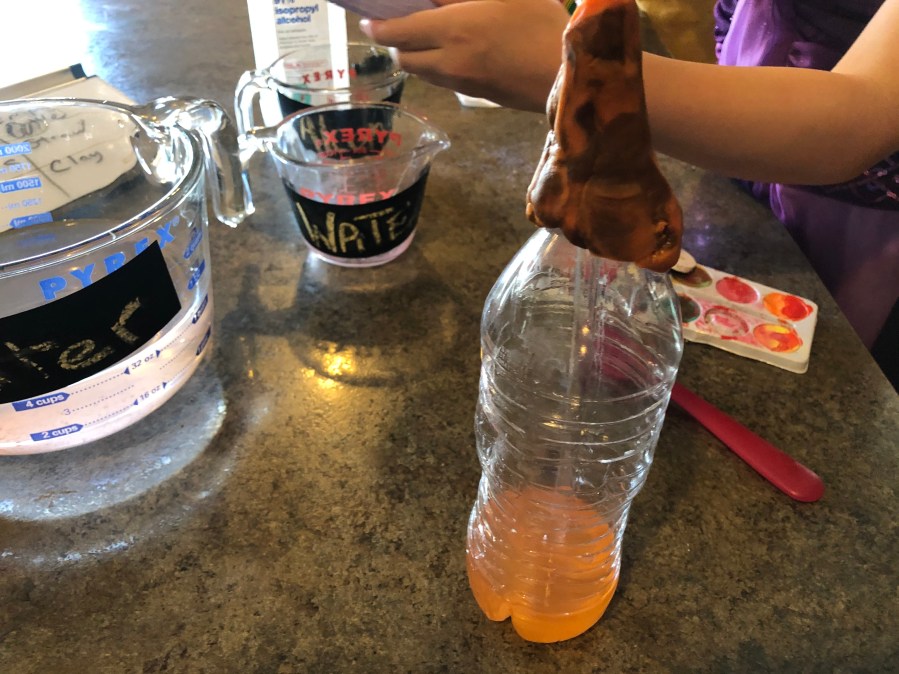PORTLAND, Ore. (KOIN) — We have a variety of temperatures throughout the year, but how do we know the thermometer is giving us the right information?
Let’s step into the science lab aka kitchen with Chief Meteorologist Natasha Stenbock and her twin helpers. They’ll show you how to make a simple, home-made thermometer.

Parents & teachers: this experiment can be done with kids as young as five.
Tell your young scientists to avoid contact with rubbing alcohol and hot water. Everything else is fine to touch. Now that we’re done with the do’s and don’ts, let’s make a very archaic home thermometer.
In this experiment our goal is to get warm water to rise through the straw. You can make this experiment as basic or as elaborate is you wish. The purpose is to demonstrate why mercury in a thermometer rises when the temperature increases. We want to prove the heat rises. Let’s get started.
Ingredients:

- 2 – 3 ounces of cold water (colder than room temperature)
- food coloring or anything that will change the color of the water
- 2 – 3 ounces of rubbing alcohol
- an empty water bottle, plastic or glass, should be transparent
- a transparent straw
- a fistfull of clay or play dough
- a large bowl full of very hot water (just hot enough before it boils)
Directions:
Here’s what you should expect: the very hot water from the big bowl will cause the cold, colored water in the bottle to rise through the straw.

- Pour the cold, colored water into your empty bottle
- Pour the alcohol into the same bottle
- Fix straw to the inside of the bottle, almost like you’re going to use it as a drink (DO NOT DRINK THIS SOLUTION)
- Use clay to mold straw in place at the bottle opening. Make sure the straw is not hitting the bottom of the bottle.
- Place bottle with the alcohol/cold colored water solution into the bowl of hot water. Hold the bottle there without burning your hands..
- Watch the the cold colored water rise up the straw quickly and overflow from there.
- That is how heat rises!
Editor’s note: The KOIN 6 Weather team is presenting weather and science lessons to help serve our teachers and students. Click here for more lessons.